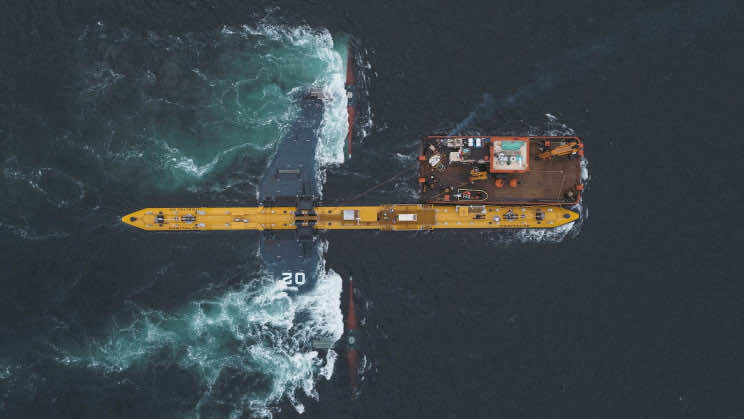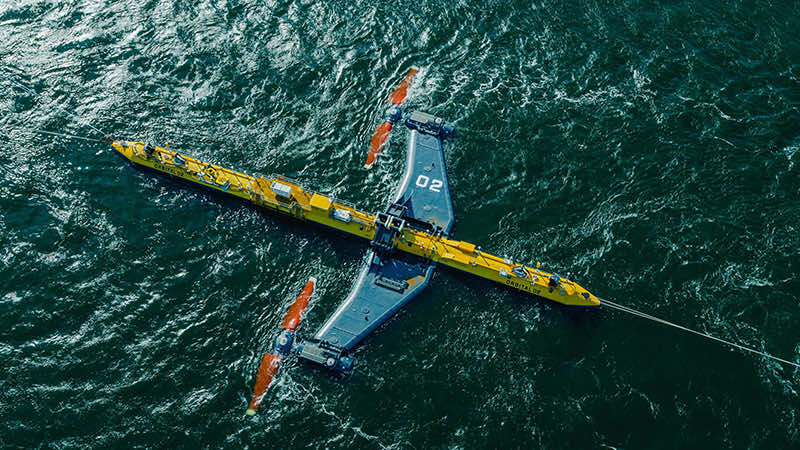Orbital Marine Power’s O2, the world’s most powerful tidal turbine, has commenced grid-connected power generation at the European Marine Energy Centre (EMEC) in Orkney. The innovative, floating 680 metric tons turbine is anchored in the Fall of Warness, where a subsea cable connects the 2MW offshore unit to the local onshore electricity network.
The 74-metre ‘O2’ turbine is efficient enough to generate electricity that would meet the demands of over 2,000 UK homes annually and will “operate in the waters off Orkney for the next 15 years”, the company announced.

Another ground-breaking part is that the turbine is also geared up to provide power to EMEC’s land-based electrolyser to generate green hydrogen that will be used to demonstrate decarbonisation of wider energy requirements.
Orbital CEO Andrew Scott said: “This is a major milestone for the O2, and I would like to commend the whole team at Orbital and our supply chain for delivering this pioneering renewable energy project safely and successfully.
“Our vision is that this project is the trigger to the harnessing of tidal stream resources around the world to play a role in tackling climate change whilst creating a new, low carbon industrial sector.”

Public lenders enabled the construction of the O2 turbine through the investment platform Abundance Investment. In addition, the Scottish government has given £3.4 million (around $4.72 million) through its Saltire Tidal Energy Challenge Fund.
Michael Matheson, the Scottish government’s Cabinet secretary for net-zero, energy and transport, said that his country was “ideally placed to harness the enormous global market for marine energy.”
“The deployment of Orbital Marine Power’s O2, the world’s most powerful tidal turbine, is a proud moment for Scotland and a significant milestone in our journey to net zero,” he went on to add.
Orbital is now looking to commercialise its technology through the deployment of multi-megawatt arrays.

Generally, U.K has invested in various projects related to marine energy. For example, in April, a research project focusing on the potential of tidal, wave and floating wind technology was supports by the Marine-i program.
As marine-based energy systems happen to be growing, the current footprint of the industry and the related tech is somewhat smaller.


